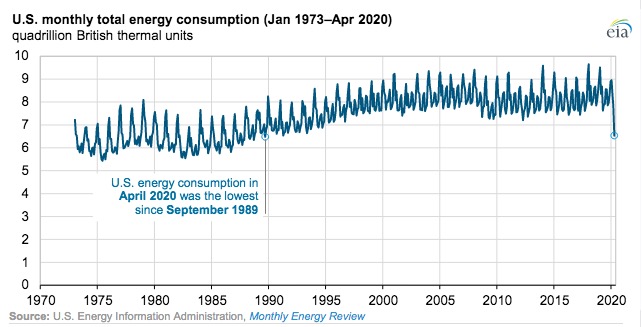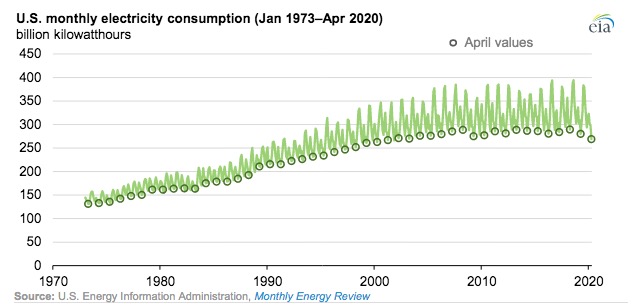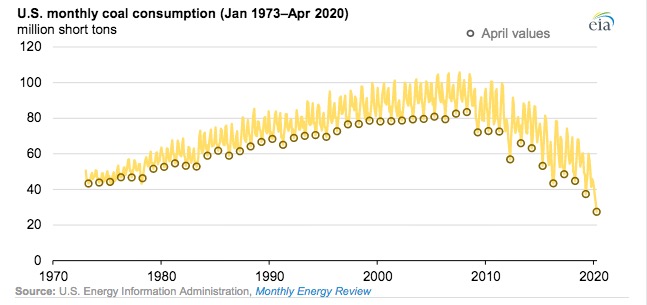I feel like I’ve been using more personal energy this year (new job, biking more, projects around the house), but apparently America used less energy this spring than it has in over 30 years:
Overall U.S. energy consumption dropped 14% during April compared to a year earlier, the energy administration said. That’s the lowest monthly level since 1989 and the largest decrease ever recorded in data that’s been collected since 1973.
The largest drop previously seen was in December 2001, after the Sept. 11 attacks shocked the economy and a mild winter depressed electricity demand.
Natural gas bucked the trend with a 15 percent increase in use during the April lockdown. More people at home meant more demand for natural gas as a heating fuel, while relatively few homes are heated with coal or oil, said Brett Marohl, who helped produce the energy administration findings.
Petroleum consumption fell to 14.7 million barrels a day in April, down almost a third compared to the same period in 2019. Demand already has rebounded some after stay-at-home orders expired and large sectors of the economy started moving again [Matthew Brown, “US Energy Use Hit 30-Year Low During Pandemic Shutdowns,” AP, 2020.07.29].
The overall energy consumption graph looks a lot like our GDP graph:

Our electricity consumption has stayed flat for the last decade:

But the coronavirus recession has only extended coal’s long decline:

Remember: burning coal and other fossil fuels increases air pollution, and air pollution makes coronavirus and other diseases worse. Staying home and using less energy makes the air cleaner, and cleaner air means less coronavirus impacts.
It was also a cool spring, which might explain some of the natural gas useage increase.
Tomorrow should see drumpf body count easily pass a few more milestones.
Coronavirus Cases:
4,861,566
Deaths:
158,912
Imagine if we could get those numbers to be Americans are the slimmest in 30 years.
Rep Dusty bemoans that the soft ethanol market hurts farmers. Tissue please.
Perhaps if they grew f o o d instead of feed or fuel our farmers would have a sustainable market.
Nobel Prize-winning economist Joseph Stiglitz is a top expert on how economic policy can play a leading role in steering the world away from fossil fuels. Foreign Policy “First Moment” podcast, June 17, 2020